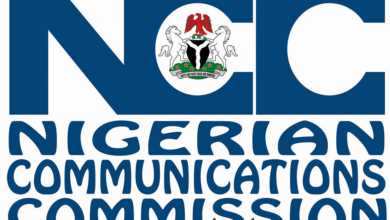How Is Africa Positioned As A Destination For Data Centres?

Focus Report by Oxford Business Group
With a large youth population and growing network penetration, Africa has demonstrated its ability to innovate and technologically leapfrog mature markets. Multiple data centre clusters have emerged in recent years, including in South Africa, Kenya, Ghana and Nigeria.
This report, produced in partnership with the Africa Data Centres Association, focuses on avenues for growth in the region’s data centre ecosystem, as well as challenges that will need to be addressed to unlock the continent’s full digital potential. Finding investors with the patience and foresight to capitalise on long-term opportunities will therefore be paramount moving forwards.
The Data Centres in Africa Focus Report was produced in partnership with the Africa Data Centres Association and includes in-depth case studies and viewpoints from key industry players.
According to Ayotunde Coker, Chairman, Africa Data Centres Association (ADCA), in his Forward to the article, noted that “Many of the necessary ingredients to drive scale in the data centre industry in Africa are beginning to come together. A large, young population, combined with growing network penetration, is expanding access to higher-speed telephony. Mobile telephony will remain the dominant access point to the internet across Africa, where consumers continue to buy products and consume content primarily via mobile phones. As a result, we are seeing strong fundamentals that favour Africa as a destination for data centres. The region has demonstrated its ability to innovate and technologically leapfrog mature markets: it happened with telephony, and it is happening with nancial technology and countless other technological innovations.
“We have multiple data centre clusters emerging already, including South Africa, Kenya, Ghana and Nigeria. Ethiopia is a particularly interesting market, as it has signi cant opportunity for deregulation and growing broadband availability, as well as many competitive advantages that put it in a strong position to expand, although recent local developments have added some uncertainty regarding the country’s stability. Nigeria also o ers standout opportunities for growth and is expected be a global data centre powerhouse.
He said “The country has a large population, of which approximately 150m people use the internet, a broadband penetration of nearly 45%, and an advantageous geostrategic location. Indeed, geography is an important element to consider when constructing data centres: North Africa’s data centre development is likely to be constrained due to its proximity to European data centre clusters, particularly Marseille, whereas Ghana, Nigeria, Kenya and South Africa are far enough from other continents that they can be competitive in terms of both speed and reliability.
“Cloud services stand to be a huge market in Africa. The continent’s tendency to consume products in sachets has a direct bearing on data consumption: pay-as-you-go and pay-for-what-you-use models are ideal for cloud services. In the post-pandemic era, broadband access at competitive rates is necessary to enable all Africans to participate in the digital economy.
“However, with these opportunities come challenges that will need to be addressed to unlock the continent’s full digital potential: more bre must be laid and satellite internet access developed as a viable alternative for rural Africans. Finding investors with the patience and foresight to capitalise on long-term opportunities is therefore paramount. ADCA is pleased to partner with Oxford Business Group on this report, and we hope it will increase awareness of the dynamism of the data centre sector on a continent that requires investment in such infrastructure to underpin future economic development.”
Overview
Data centres (DCs) are the lifeblood of the global digital economy. Consisting of large groups of networked computer systems and servers, they remotely store, process and distribute vast troves of data, and have been widely referred to as “the new gold”. Companies need DCs to monitor and improve performance, while governments require them to deliver essential public services. Increasingly, DCs also host the cloud-based applications consumers rely on for day-to-day services such as banking and work collaboration, entertainment and navigation. Indeed, DCs helped to facilitate remote work during the Covid-19 pandemic, even amid strict lockdowns.
Market research rm Gartner estimates that the global market for DC provision
will reach $200bn in 2021, up 6% on the previous year. As of mid-2021 Africa accounted for less than 1% of global co- location DC supply, but that is forecast to grow by 25% by 2023, according to advisory
and research rm Xalam Analytics. Revenue from the African DC market, meanwhile, is expected to expand at a compound annual growth rate of 12% from 2019 to 2025, to reach $3bn. Increasing demand for cloud- based services and modular DC solutions from organisations, particularly small and medium-sized enterprises, and government agencies, will underpin the market, with more than 70% of African organisations estimated to shift to the cloud by 2025.
In mature markets the world’s largest technology companies maintain hyperscale DCs that house upwards of 5000 servers, in which one tenant leases several megawatts of space. Microsoft hosts the largest, in Chicago, with almost 200 MW available. In Africa demand has only recently justi ed the rollout of multi-tenant facilities in major markets. Late adoption has left a massive supply gap – Africa as a whole needs up to 1000 MW and 700 facilities to meet demand and bring capacity density
up to par with that in South Africa, the continental leader. Launching a DC can be challenging in Africa, where access to the resources necessary to run reliable services, such as power, land, water and connectivity, are often scarce. Even so, a combination of multinational and African tech and telecoms companies, often with signi cant venture capital backing, are quickly rolling out new facilities, each one reducing latency times, and enriching the digital economy in which they operate.
Governments and pan-African organisations are also playing an important role in nurturing the industry through supportive policy-making, while protecting the environment and critical infrastructure. For its part, the Africa Data Centres Association, the industry trade organisation for the continent, connects equipment suppliers with DC operators, and ensures the industry’s voice is heard among the region’s top decision-makers.
Definitions
Internet infrastructure housed inside DCs include internet exchanges, cloud exchanges, cloud providers, web-hosting providers, internet backbone carriers, content delivery networks, internet access providers and bre operators. DCs are non-descript buildings that contain vast banks of server racks, connectivity and storage systems, as well as redundant or backup power, redundant data communications connections, cooling installations, re safety systems and security devices.
Maintaining such facilities independently is very costly, but co-location DCs operate lean business models by renting to multiple clients at the same time. Tenants are charged for space and provide their own hardware, allowing them to
scale seamlessly, rather than having to estimate the cost of their business’ future IT requirements. Conversely, single- tenant, or enterprise, DCs only facilitate the needs of their own companies, such as a telecoms rm, bank or government that has its own in-house IT infrastructure. Carrier-neutral facilities, meanwhile, allow for interconnection between many carriers and are therefore wholly independent of any network provider, ensuring diversity and exibility, and a level playing eld for domestic and international clients alike. Edge DCs are smaller facilities located near the populations they serve, while hyperscale DCs are large facilities that can scale up e ciently.
Hosting IT systems in co-location DCs o ers several advantages. Chief among these is reliability: DCs are classi ed across four tiers that increase according to their level of redundancy and expected annual uptime. Tier-1 DCs, for example, have a single path for power and cooling, and few, if any, redundant and backup components. They also have an expected uptime of 99.67%, equivalent to 29 hours of downtime annually. Tier-2 DCs have a single path for power and cooling, and some redundant and backup components. They have an expected uptime of 99.74%, or 22 hours of downtime annually. Tier-3 facilities have multiple power and cooling paths in place to limit downtime to 1.6 hours annually. Tier-4 DCs, of which there are now a handful in Africa, are built to be entirely fault tolerant, with redundancy for every component, and an expected downtime of just 26 minutes each year.
Tenants can thus be assured that they will not lose business due to connectivity outages, which would have signi cant consequences for always on-demand services such as health care, for example. Moreover, energy costs are lower, as DCs tend to use more e cient equipment – including chilled water systems – than on-premise operations. Lastly, as facilities are purpose-built to protect clients’ data and infrastructure, DCs o er a higher level security than in-house operations.
Installed Digital Infrastructure Africa has 140,000 sq metres of DC space shared among a little more than 100 DCs – gures similar to that of Switzerland alone. However, rapid digitisation and the rollout of 4G and 5G infrastructure across the continent mean that supply is poised to increase by 50% between 2021 and 2026. More than 30 Tier-3 and above multitenant facilities have already come on-line since 2016, approximately doubling the continent’s data hosting capacity to roughly 200 MW as of the end of 2019. However, capacity is unevenly distributed, with more than two-thirds based in South Africa. This is due to several factors, including the size of its economy ($351.4bn in 2019), links to subsea bre-optic cables and a long-standing liberalised telecoms market.
It is also the locus of Africa’s largest internet exchange, NAPAfrica, which retains the largest number of peering connections on the continent, and provides international and regional telecoms carriers, content delivery networks, cloud providers and other stakeholders a gateway to over 20 southern African countries. Johannesburg, the centre of DC provision in South Africa, hosts 55 MW of capacity, compared to 796 MW and 728 MW in Dublin and London, respectively. That said, South Africa’s largest city is already ahead of other up-and-coming DC markets, such as Madrid, Warsaw and Marseille.
Another leading market in Africa is Nairobi, which hosts 19 MW of capacity. Though the gure is 3 about one-third of Johannesburg’s volume, Kenya sits on four major subsea cables, and boasts strong cross-border bre connections and a vibrant stock exchange, making it well placed to become a regional centre. Elsewhere on the continent, Nigeria and Côte d’Ivoire boast similar advantages, as do Ghana and Senegal.
According to Xalam Analytics, 10% of the existing DC capacity serves nearly half of sub-Saharan Africa’s economic output and broadband connections. Moreover, one-third of Africa’s 80 or so cities with a population of more than 1m people have a DC rated Tier-3 or above, demonstrating the scale of the distribution gap.
Case Studies
MainOne
MainOne established a presence in West Africa in 2010 with its 7000-km submarine cable from Portugal to Nigeria and commissioned its rst data centre (DC) in the African country in 2015.
The company has developed an interconnected ecosystem of telecoms operators and internet service providers, internet exchanges, content providers and other major institutions across the region, co-located in its DCs.
MainOne has increased the capacity of its DCs, which reached 5 MW in the key markets of Nigeria, Ghana and Côte d’Ivoire, with services delivered to a total of 10 countries across West Africa. The most recent addition to its portfolio is the Tier-3 Appolonia DC facility (see photo) in Accra, Ghana, which was launched in June 2021.
The company also began an expansion project in Lagos, Nigeria, with the goal of increasing its 600-rack facility to over 1200 racks by 2023, and further investment has also been directed towards the expansion for its DC in Côte d’Ivoire.
Through these investments, MainOne continues to deliver services via the company’s interconnection ecosystem, access to submarine cable system landings, the West African Internet Exchange in Nigeria and support for the entry of hyperscale players to the region.
Viewpoint
Funke Opeke, CEO, MainOne
Access to a ordable, reliable and environmentally sustainable sources of electricity is a pressing issue for the growing number of data centre (DC) operators across Africa. These facilities need to ensure a high availability of power to mitigate downtime, but many African countries face frequent power outages. Existing DCs have relied on diesel-fuelled generators to fuel operations during power outages, a practice that could exacerbate carbon emissions in the future. Indeed, the deployment of hyperscale DC capacity is expected to increase emissions through further diesel-generator utilisation.
Power distribution networks are facing frequent shortages, but there is an adequate supply of electricity in the region’s national grids. By strategically locating DCs close to sources of power, partnerships can be made with local power distribution companies to build direct connections to the national grid. This will ensure high power availability and reduce the utilisation of diesel- fuelled power generation.
Energy e ciency is also key to the sustainability of DCs. Operators can build energy-e cient facilities by optimising air ow, using sensors and arti cial intelligence to manage operations, and installing energy-e cient hardware. Taken together, these actions will go a long way towards reducing the carbon footprint of DCs.
Africa is experiencing some of the fastest growth in internet access seen around the world, largely due to its young population. As such, data consumption will continue to grow for the foreseeable future. This will fuel further investment in submarine cables and DCs to bring data closer to consumers. However, without sustainable power strategies, the industry will continue to contribute to global warming in a region that can least a ord the consequences.
PCCW Global
PCCW Global is an international IT company that overs mobility, voice and data solutions to multinational enterprises, telecommunications partners, and cloud and application service providers. With a network reaching over 3000 cities in more than 160 countries across ve continents, the rm built international connections between locations spanning Africa, the Americas, Asia- Paci c, Europe and the Middle East.
The company’s network includes more than 18 points of presence in Africa, linking the continent to the rest of the world via multiple subsea cable routes along its east and west coasts. PCCW Global provides automated and on-demand access to its global network through its network-as-a-service platform Console Connect. The rm is looking to leverage it to help African businesses connect more easily to public cloud providers and data centres inside and outside of the region.
As a consequence of the swift adoption and growing use of cloud connectivity – especially after the Covid-19 pandemic – continued expansion in the African data centre industry appears inevitable to many stakeholders in the region. There is considerable urgency to address rising data usage by building data centres, particularly with the arrival of hyperscale cloud service providers and a growing number of internet users on the continent.
Viewpoint
Silvio Do Carmo, Managing Director for the Southern African Development Community and East Africa, PCCW Globalo
The African data centre industry has undergone a rapid transformation since the start of 2020. The arrival of hyperscale providers, falling smartphone prices, the democratisation of data, and the Covid-19 pandemic that led hundreds of thousands of Africans to go online in more meaningful and habit-forming ways have all stimulated the industry.
While data centre and network infrastructure has improved across the continent in recent years, there is still much work to be done. In order to fully embrace digital transformation, businesses need more reliable and a ordable internet access, which will require further investment in new networks and data centres. Many businesses in Africa accelerated their digital transformation journey in order to help them operate during the Covid-19 pandemic, and a lot of these companies are now looking beyond the short term to explore how cloud-based services can help them drive e ciencies in the future.
Fortunately, as Google Cloud, Amazon Web Services and Microsoft Azure further penetrate the African market, enterprises are able to host more of their data on the continent itself. Advancements in network automation technology will further support the development of Africa’s cloud and data centre ecosystem, with interconnection platforms such as Console Connect providing new levels of network speed, agility and security for businesses as they connect to more cloud servers and data centres both inside and outside the region.
Source: Oxford Business Group
To be Continued




